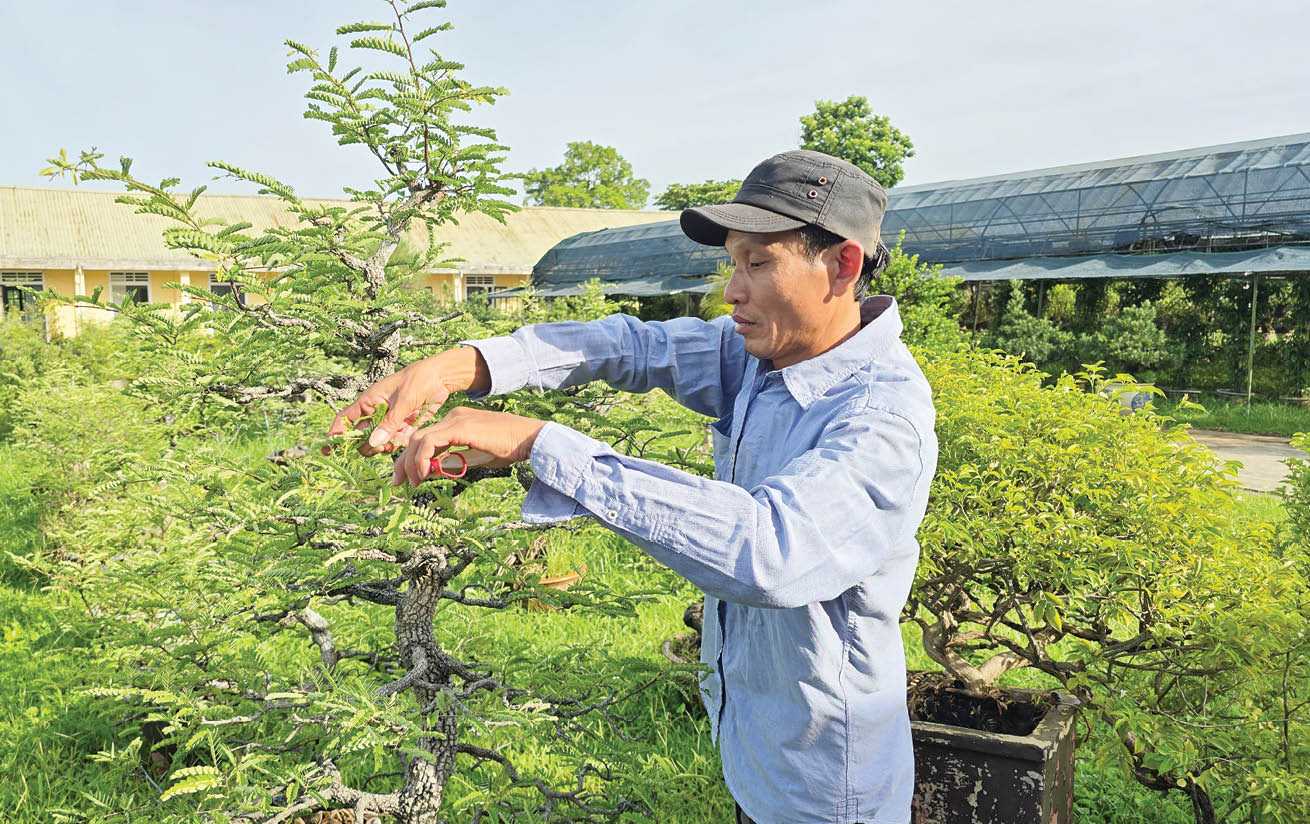 |
| Mr. Hoang The Hung pruned the branches of the bonsai tamarind tree at the nursery. |
Green trees - A part of " Hue soul"
In the Hue heritage space, trees are not simply shade or landscape embellishments. They are “green witnesses” reflecting the Can Chanh Palace, spreading fragrance on the porch of Tu Duc Tomb, standing majestically in the Imperial Citadel’s courtyard. The parasol trees, cycads, laurels, apricots, white frangipanis… are part of the Hue consciousness - where nature and architecture blend together in the depth of culture.
However, time and climate change are causing many ancient trees, fruit trees, and ornamental plants in the Hue relic complex to gradually deteriorate and become old. Many trees have broken down in storms and rotted due to pests and diseases. If they are not promptly replaced with new individuals of the same species, shape, and characteristics, the risk of destroying the landscape and losing the "soul" of the relic is very high.
Recognizing the value of the relic ecosystem, the Hue Monuments Conservation Center has persistently implemented the journey of propagating precious trees from ancient individuals in the relic, serving the purpose of supplementary planting, replacement and long-term conservation.
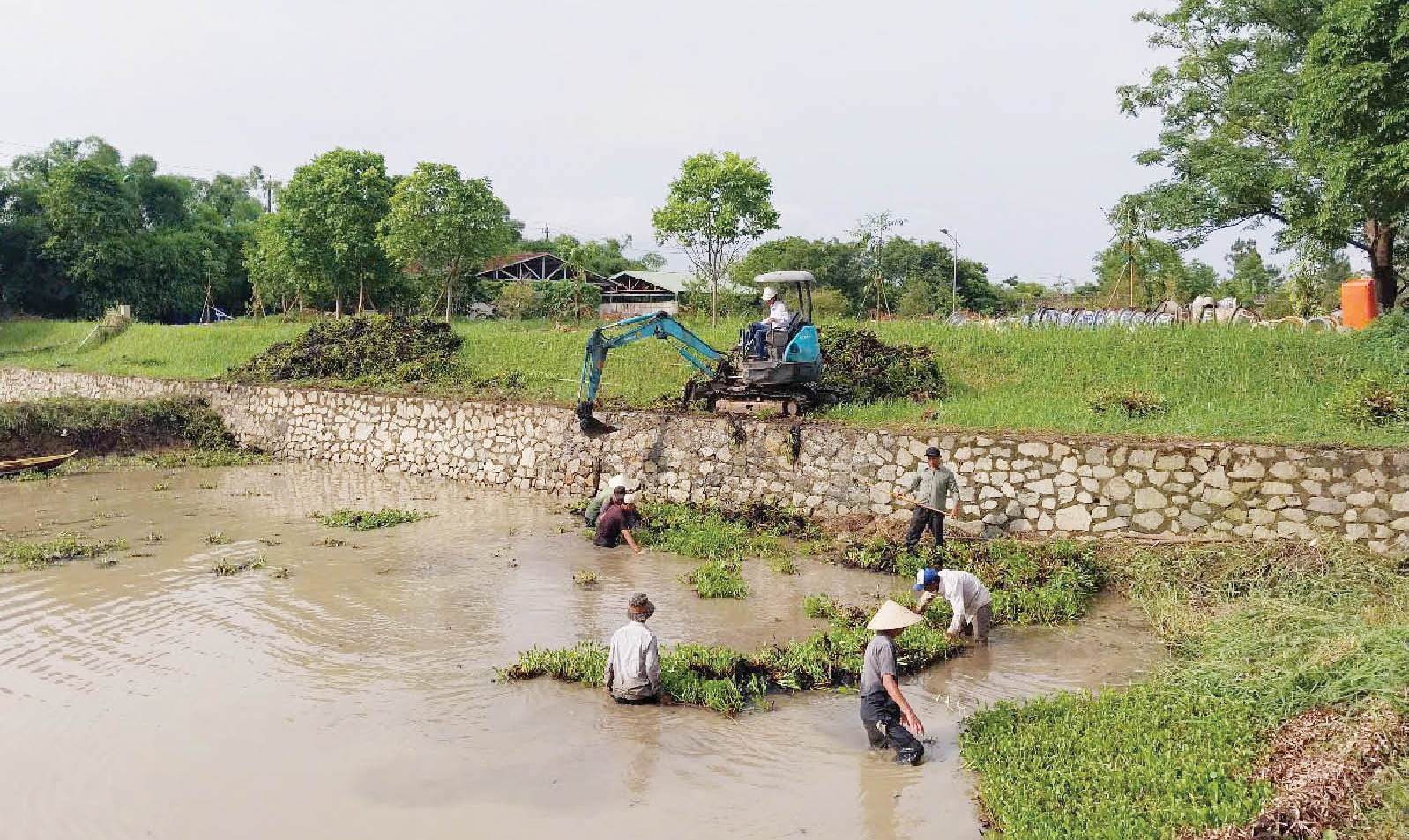 |
| Dredging the lake to release lotus |
At the Nursery Team - Environmental Landscape Department of the Center, the journey of "nurturing memories" begins with silent work: selecting each graft, cutting, and seed from the mother tree with beautiful shape, good growth, and high historical value. Precious trees such as parasol, mimosa, magnolia, porcelain, la han pine, fruit trees such as lychee, longan, jackfruit... are propagated by many different methods, ensuring the correct species and preserving their identity.
The breeding and care area is located at Van Thanh - a place with sufficient conditions of land, water, light, ponds and high care skills. In addition, Cu Thanh mausoleum is an area for planting large trees, waiting to be planted at relic sites. Each mature seedling is numbered, clearly stating its origin, time and future planting location. This data system gradually forms a digital basis for heritage trees, helping with scientific and accurate management.
“We consider propagation as replanting a part of Hue’s memory. It’s not just a new tree, but the right type of tree, in the right location, ensuring harmony with the architecture and traditional feng shui meaning,” said Mr. Hoang The Hung, Head of the nursery.
At Van Thanh nursery, there are currently about 15 tree species with nearly 3,000 seedlings and 2,000 finished and semi-finished bonsai trees. In 2024 alone, nearly 1,000 shade trees were planted to supplement part of the Thieu Tri mausoleum belt area.
Along with green trees, the garden also breeds white lotus and koi carp - typical elements in the landscape lake of the Imperial City. After Thieu Phuong garden is restored, ancient gardens such as Vinh Phuong and Co Ha will also be planned, gradually restoring the beauty of the ancient royal gardens.
Connecting nature and memory
“Each tree selected must ensure the correct shape, position and symbolic value,” said Mr. Hung. Parasol, a tree symbolizing the monarch, is planted in the Imperial City - where the king lives and holds court. Cycads, a symbol of longevity, are often planted symmetrically in front of shrines or mausoleum steps. White porcelain with a light fragrance is placed in quiet places, such as corridors or by the inner palace lake.
“We have maps of each relic site and the corresponding trees. When the trees show signs of exhaustion, the technical team will survey, evaluate and replace them with corresponding propagated trees,” Mr. Hung added.
Thanks to proactive propagation work, up to now, many areas in the Imperial City, Gia Long Tomb, Tu Duc Tomb, Dong Khanh Tomb… have had timely replacement of young trees, ensuring the space is always green and preserving the traditional “Hue quality”.
In the scorching August sun, Mr. Do Thanh Ty, a nursery worker, and his teammates still take the time to water the plants in the early morning and late afternoon. “During the day, we take care of and pot the flowers to prepare for decorating the historical sites on the occasion of National Day, September 2. There is a lot of work, but every time I see the plants growing healthy and the flowers blooming beautifully, I feel happy,” Mr. Ty shared.
“We hope that not only Hue people but also tourists will feel the journey of conservation and restoration in a vivid way, from architecture to plants. Each tree is part of the heritage, which needs to be preserved,” said Mr. Hoang Viet Trung, Director of the Hue Monuments Conservation Center.
The trees not only cool the space, but also prolong the memory of a land that has gone through many ups and downs. And the propagation and planting of these precious trees is contributing to creating a “living”, greener and more sustainable Hue heritage for today and tomorrow.
Source: https://huengaynay.vn/van-hoa-nghe-thuat/geo-mam-xanh-giua-long-di-san-156905.html




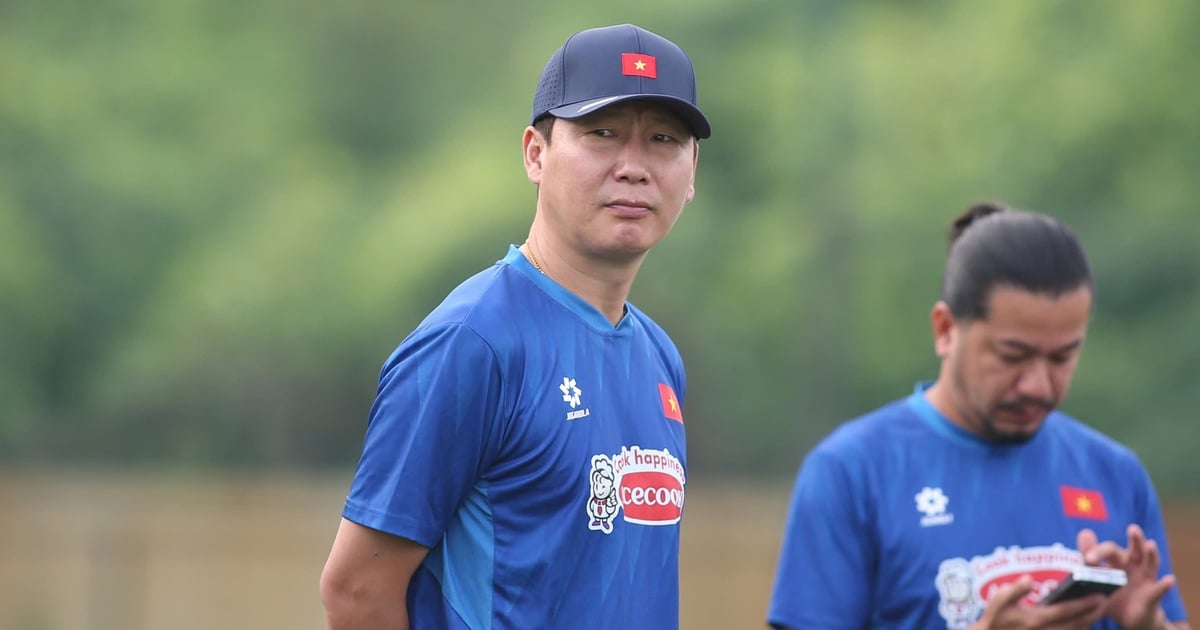
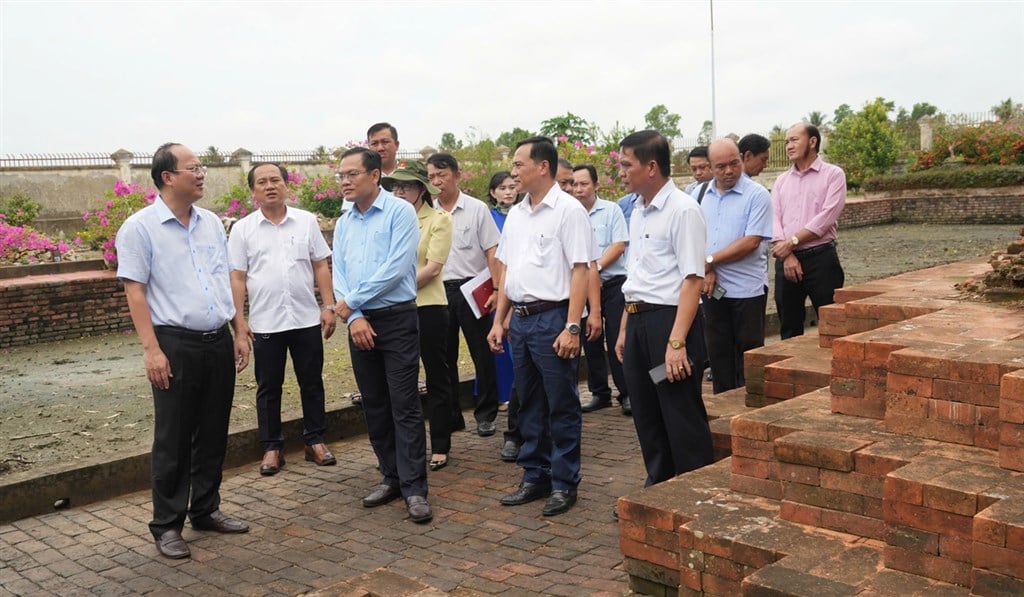
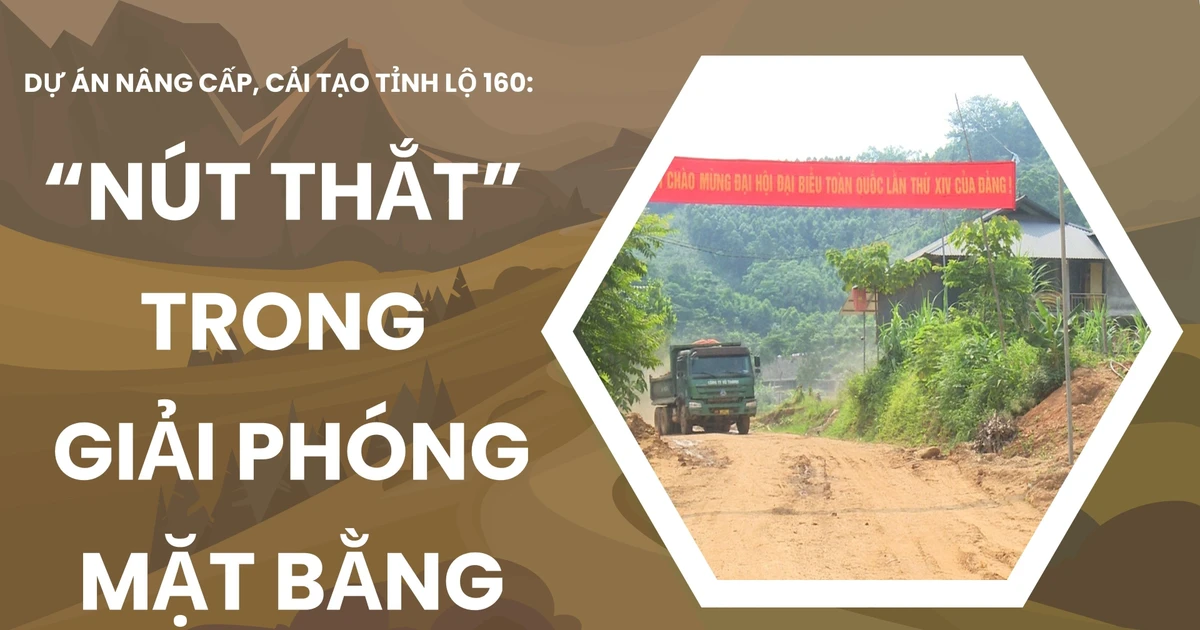
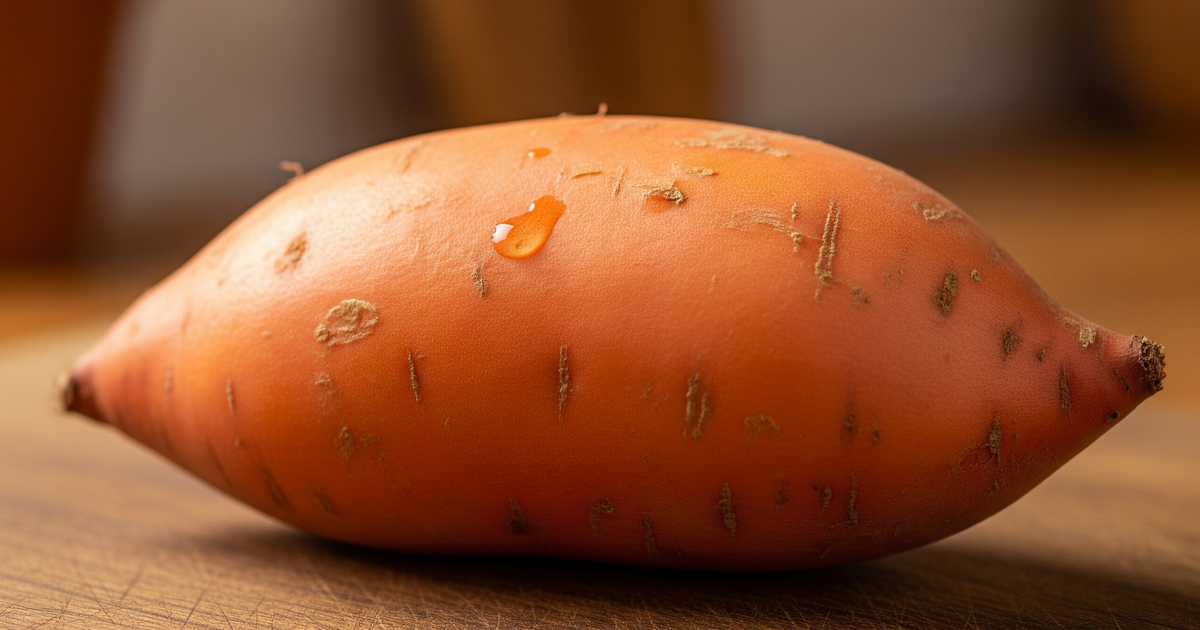



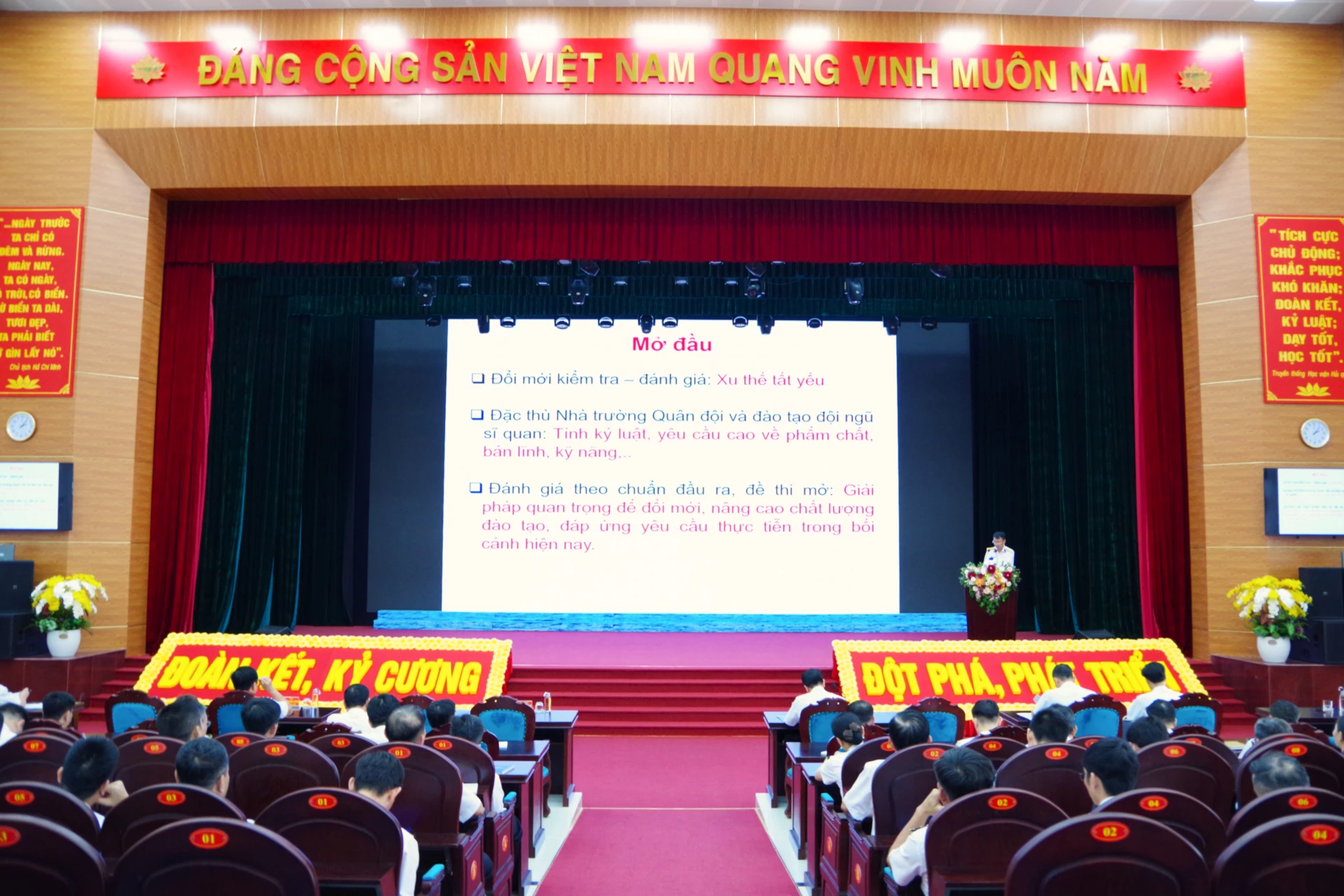




















![[Photo] An Phu intersection project connecting Ho Chi Minh City-Long Thanh-Dau Giay expressway behind schedule](https://vstatic.vietnam.vn/vietnam/resource/IMAGE/2025/8/21/1ad80e9dd8944150bb72e6c49ecc7e08)































![[Photo] Politburo works with the Standing Committee of Hanoi Party Committee and Ho Chi Minh City Party Committee](https://vstatic.vietnam.vn/vietnam/resource/IMAGE/2025/8/21/4f3460337a6045e7847d50d38704355d)

































Comment (0)